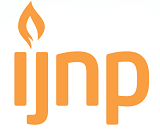Digital-Based and Direct Education to Enhance Complementary Feeding Knowledge and Practices: A Systematic Review
DOI:
https://doi.org/10.18196/ijnp.v8i1.21431Keywords:
children, complementary feeding, digital education, direct education, infantAbstract
Background: The practice of infant and young children still does not meet the WHO guidelines, although different types of education have been carried out to increase mothers' knowledge of infant and young children's feeding practices.
Objective: To identify the effectiveness of digital education and direct education in increasing the knowledge and practice of infants and children aged 6-23 months.
Method: The research design is a systematic review using PRISMA flow. The databases used to search for articles in English published in the period 2013 to 2023 are Pubmed, ScienceDirect, Scopus, and MEDLINE using the search keywords ‘Mother OR maternal’, ‘Children OR infants’, ‘Digital based AND health education method’, and ‘Complementary feeding’. A total of 461 articles were obtained using RCT, quasi-experiment, and combined RCT-cohort research designs. Researchers use the Covidence tool for the data selection process through the extraction. Risk of bias assessment uses the JBI instrument to evaluate articles.
Results: Four articles detail the efficacy of digital-based education (utilizing smartphone applications, WeChat, WhatsApp, and digital job aid education), while five articles delve into the effectiveness of direct education approaches (peer counseling, personalized counseling, and home visits). Another article examines the effectiveness of both home visits and interactive voice calls. The research spanned multiple countries, including Indonesia, Bangladesh, India, China, Cambodia, Iran, and Brazil, encompassing a participant pool ranging from 110 to 1885 research subjects. Findings indicate that digital education enhances mothers’ understanding of nutrition, essential knowledge, practices in providing complementary feeding in line with IYCF guidelines, and mother’s confidence in preparing complementary foods. Moreover, direct education increased compliance with suggested feeding practices, encompassing dietary variety, intake of animal protein, and the consumption of iron-rich foods.
Conclusion: Nurses can enhance knowledge and practice of complementary feeding by embracing digital education as a potential solution and concurrently promoting cultural sensitivity and tailored education.
References
Ara, G., Khanam, Ma., Papri, N., Nahar, B., Kabir, I., Sanin, K. I., Khan, S. S., Sarker, Md. S. A., & Dibley, M. J. (2019). Peer counseling promotes appropriate infant feeding practices and improves infant growth and development in an Urban Slum in Bangladesh: A community-based cluster randomized controlled trial. Current Developments in Nutrition, 3(7). https://doi.org/10.1093/cdn/nzz072
Azak, M., Korkmaz, N., Şahin, K., & Gözen, D. (2023). Evaluation of YouTube videos on complementary feeding: Content quality and reliability analysis. Appetite, 188. https://doi.org/10.1016/j.appet.2023.106766
Billah, S. M., Ferdous, T. E., Kelly, P., Raynes-Greenow, C., Siddique, A. B., Choudhury, N., Ahmed, T., Gillespie, S., Hoddinott, J., Menon, P., Dibley, M. J., & Arifeen, S. El. (2022). Effect of nutrition counselling with a digital job aid on child dietary diversity: Analysis of secondary outcomes from a cluster randomised controlled trial in rural Bangladesh. Maternal and Child Nutrition, 18(1). https://doi.org/10.1111/mcn.13267
Bimpong, K. A., Cheyuo, E. K. E., Abdul-Mumin, A., Ayanore, M. A., Kubuga, C. K., & Mogre, V. (2020). Mothers’ knowledge and attitudes regarding child feeding recommendations, complementary feeding practices and determinants of adequate diet. BMC Nutrition, 6(1). https://doi.org/10.1186/s40795-020-00393-0
Binamungu, J., Kimera, S. I., & Mkojera, B. (2023). Maasai mother’s knowledge on complementary feeding practices and nutritional status of children aged 6–24 months in Monduli District, Arusha, Tanzania: A case study of Naitolia village. Food Science and Nutrition. https://doi.org/10.1002/fsn3.3492
Brown, A., & Rowan, H. (2016). Maternal and infant factors associated with reasons for introducing solid foods. Maternal and Child Nutrition, 12(3), 500–515. https://doi.org/10.1111/mcn.12166
Cândido, N. A., De Sousa, T. M., & Dos Santos, L. C. (2018). Effectiveness of different interventions in public nurseries based on food and nutrition education: Promoting breast-feeding and healthy complementary feeding. Public Health Nutrition, 21(13), 2454–2461. https://doi.org/10.1017/S1368980018001015
Ekholuenetale, M., Barrow, A., Ekholuenetale, C. E., & Tudeme, G. (2020). Impact of stunting on early childhood cognitive development in Benin: evidence from Demographic and Health Survey. Egyptian Pediatric Association Gazette, 68(1). https://doi.org/10.1186/s43054-020-00043-x
Gebremariam, K. T., Zelenko, O., Hadush, Z., Mulugeta, A., & Gallegos, D. (2020). Could mobile phone text messages be used for infant feeding education in Ethiopia? A formative qualitative study. Health Informatics Journal, 26(4), 2614–2624. https://doi.org/10.1177/1460458220911779
Haque, N. B., Mihrshahi, S., & Haider, R. (2023). Peer counselling as an approach to improve complementary feeding practices: a narrative review. Journal of Health, Population, and Nutrition, 42(1), 60. https://doi.org/10.1186/s41043-023-00408-z
Herman, H., Mansur, A. R., & Chang, Y. J. (2023). Factors associated with appropriate complementary feeding: A scoping review. In Journal of Pediatric Nursing. W.B. Saunders. https://doi.org/10.1016/j.pedn.2023.04.017
Miniello, V. L., Verga, M. C., Miniello, A., Di Mauro, C., Diaferio, L., & Francavilla, R. (2021). Complementary feeding and iron status: “the unbearable lightness of being” infants. In Nutrients (Vol. 13, Issue 12). MDPI. https://doi.org/10.3390/nu13124201
Nurhayati, E., Hapsari, E. D., Rosyidah, R., & Helmyati, S. (2023). Educational models of infant and young child feeding among prenatal and postnatal women during the COVID-19 pandemic (January 2020–January 2023): A scoping review. In Nutrition (Vol. 115). Elsevier Inc. https://doi.org/10.1016/j.nut.2023.112150
Owais, A., Schwartz, B., Kleinbaum, D. G., Suchdev, P. S., Faruque, A. S. G., Das, S. K., Rahman, S., & Stein, A. D. (2017). A nutrition education program in rural bangladesh was associated with improved feeding practices but not with child growth. Journal of Nutrition, 147(5), 948–954. https://doi.org/10.3945/jn.116.243956
Rachmah, Q., Astina, J., Atmaka, D. R., & Khairani, L. (2023). The effect of educational intervention based on theory of planned behavior approach on complementary feeding: A randomized controlled trial. International Journal of Pediatrics (United Kingdom), 2023. https://doi.org/10.1155/2023/1086919
Saaka, M., Wemah, K., Kizito, F., & Hoeschle-Zeledon, I. (2021). Effect of nutrition behaviour change communication delivered through radio on mothers’ nutritional knowledge, child feeding practices and growth. Journal of Nutritional Science, 10, e44. https://doi.org/10.1017/jns.2021.35
Saleh, A., Syahrul, S., Hadju, V., Andriani, I., & Restika, I. (2021). Role of maternal in preventing stunting: A systematic review. Gaceta Sanitaria, 35, S576–S582. https://doi.org/10.1016/j.gaceta.2021.10.087
Seyyedi, N., Rahimi, B., Eslamlou, H. R. F., Afshar, H. L., Spreco, A., & Timpka, T. (2020). Smartphone-based maternal education for the complementary feeding of undernourished children under 3 years of age in food-secure communities: Randomised controlled trial in Urmia, Iran. Nutrients, 12(2). https://doi.org/10.3390/nu12020587
Sharma, N., Gupta, M., Aggarwal, A. K., & Gorle, M. (2020). Effectiveness of a culturally appropriate nutrition educational intervention delivered through health services to improve growth and complementary feeding of infants: A quasi-experimental study from Chandigarh, India. PLoS ONE, 15(3). https://doi.org/10.1371/journal.pone.0229755
Thompson, K. L., Conklin, J. L., & Thoyre, S. (2023). Parental decision-making around introducing complementary foods: An integrative review. Journal of Family Nursing. https://doi.org/10.1177/10748407231156914
Twabi, H. S., Manda, S. O. M., & Small, D. S. (2021). Evaluating the effect of appropriate complementary feeding practices on child growth in Malawi using cross-sectional data: An application of propensity score matching. Frontiers in Nutrition, 8. https://doi.org/10.3389/fnut.2021.714232
UNICEF. (2020). Improving young children’s diets during the complementary feeding period (J. D’Aloisio, Ed.). UNICEF.
UNICEF. (2023, May). Stunting has declined steadily since 2000 – but faster progress is needed to reach the 2030 target. Wasting persists at alarming rates and overweight will require a reversal in trajectory if the 2030 target is to be achieved. Https://Data.Unicef.Org/Topic/Nutrition/Malnutrition/#:~:Text=In%202022%2C%2022.3%20per%20cent,204.2%20million%20to%20148.1%20million.
WHO. (2022, November). Complementary Feeding. https://www.who.int/health-topics/complementary-feeding#tab=tab_1
WHO. (2023). WHO guideline for complementary feeding of infants and young children 6-23 months of age. World Health Organization.
Wu, Q., Wang, X., Zhang, J., Zhang, Y., & Velthoven, M. H. van. (2023). The effectiveness of a WeChat-based self-assessment with a talored feedback report on improving complementary feeding and movement behaviour of children aged 6-20 months in rural China: A cluster randomized controlled trial. The Lancet Regional Health - Western Pacific, 37(100796). https://doi.org/10.1016/j.lanwpc.2023.100796
Yao, S., Xiao, S., Jin, X., Xiong, M., Peng, J., Jian, L., Mei, Y., Huang, Y., Zhou, H., & Xu, T. (2022). Effect of a community-based child health counselling intervention on health-seeking behaviours, complementary feeding and nutritional condition among children aged 6–23 months in rural China: A pre- and post-comparison study. Maternal and Child Nutrition, 18(1). https://doi.org/10.1111/mcn.13289
Young, M. F., Baik, D., Reinsma, K., Gosdin, L., Rogers, H. P., Oy, S., Invong, W., Hen, H., Ouk, S., & Chhorvann, C. (2021a). Evaluation of mobile phone-based positive deviance/hearth child undernutrition program in Cambodia. Maternal and Child Nutrition, 17(4). https://doi.org/10.1111/mcn.13224
Downloads
Additional Files
Published
Issue
Section
License
License
Articles published in the IJNP (Indonesian Journal of Nursing Practices) are licensed under a Attribution 4.0 International (CC BY 4.0) license. You are free to:
- Share — copy and redistribute the material in any medium or format.
- Adapt — remix, transform, and build upon the material for any purpose, even commercially.
This license is acceptable for Free Cultural Works. The licensor cannot revoke these freedoms as long as you follow the license terms. Under the following terms:
Attribution — You must give appropriate credit, provide a link to the license, and indicate if changes were made. You may do so in any reasonable manner, but not in any way that suggests the licensor endorses you or your use.
- No additional restrictions — You may not apply legal terms or technological measures that legally restrict others from doing anything the license permits.
Copyright
Authors who publish with IJNP (Indonesian Journal of Nursing Practices) agree to the following terms:
- Authors retain copyright and grant IJNP (Indonesian Journal of Nursing Practices) the right of first publication with the work simultaneously licensed under an Attribution 4.0 International (CC BY 4.0) that allows others to remix, adapt and build upon the work with an acknowledgment of the work's authorship and of the initial publication in IJNP (Indonesian Journal of Nursing Practices).
- Authors are permitted to copy and redistribute the journal's published version of the work (e.g., post it to an institutional repository or publish it in a book), with an acknowledgment of its initial publication in IJNP (Indonesian Journal of Nursing Practices).














